Don’t let the “sting” of stinging nettles keep you from getting to know this amazing plant. Nettles have a long history of use for food, medicine, fiber and more. We’ll introduce you to this natural green wonder and its many benefits.
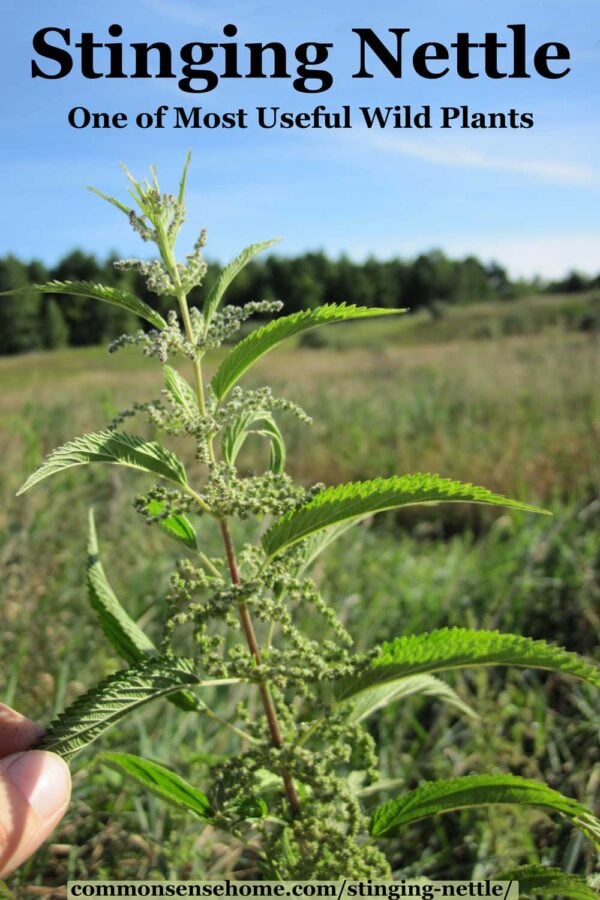
Stinging Nettle, Urtica dioica
Stinging nettle is also known as common, slender or tall nettle; stingers, wild spinach, and devil leaf.
Where to Find Stinging Nettle
Nettles are a perennial plant found in the United States, Canada, Europe, Asia, Africa and South America. They prefer high nitrogen soil with plenty of moisture, like the edges of farm fields and along rivers.
If they show up in your garden, you might want to relocate them before the plants get too big. They spread via rhizomes, and can take over a garden bed completely. Planted along an edge they can protect your garden, but be wary of spreading.
If you don’t have your own stinging nettles to gather, there are a wide variety of nettle products on the market. Health food stores, online merchants and enterprising herbalists sell everything from herbal tea, to salves to freeze dried nettles.
Plant Identification – Leaves, Stems and Roots
The mature leaves are oblong and deeply toothed. They are 2-5 inches long and found in opposite pairs every few inches along the upper half of the stalk. Young plants will often have a purplish tinge as they emerge from the ground.
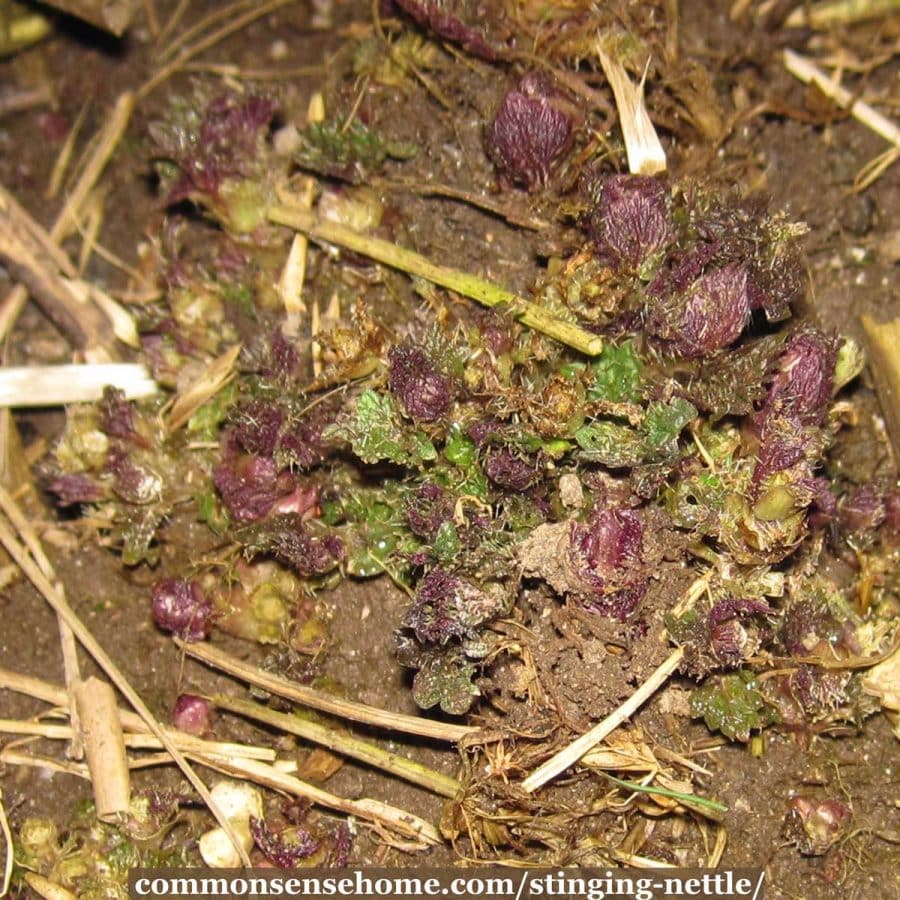
The entire plant is covered with fine stinging hairs and grows from 3-7 feet tall in temperate climates. (Warm climate Urtica dioica can grow up to 20 feet tall.) Stalks are hollow and squarish, with four deep grooves running along their length. The stem contains strong fibers, historically used for rope, fabric and paper.
Nettle roots form rhizome networks, similar to quackgrass. A healthy colony can spread five feet or more in a season.
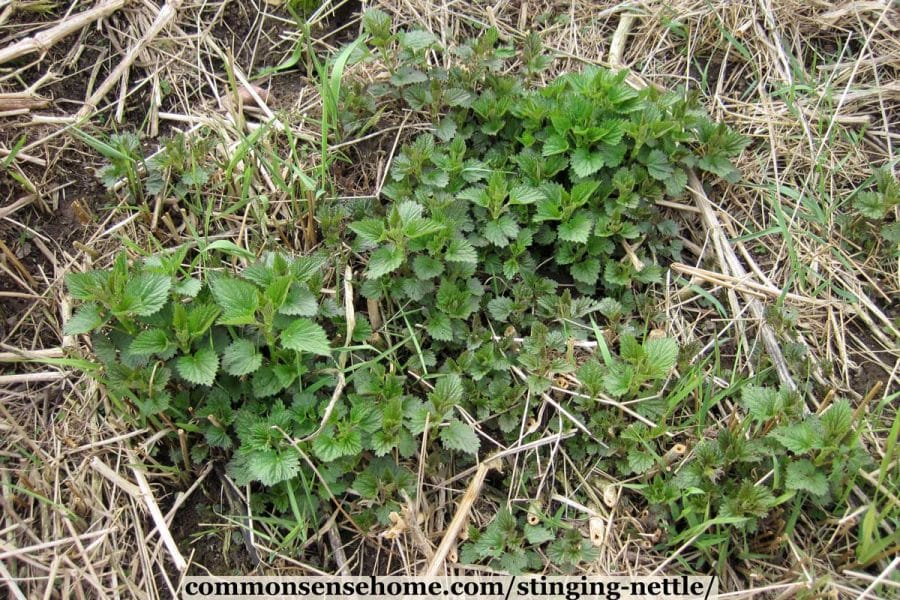
Stinging Nettle Rash
Touching a nettle plant with bare skin will produce a stinging or burning sensation. Each stinging hair contains toxin at the base. When you brush against the plant, the tip of the hair breaks off. This broken hair acts like a hypodermic needle to inject formic acid (also found in ant bites), histamine, acetylcholine and other irritants.
The rash will subside on its own over time. To speed up the process, try applying crushed plantain, jewelweed, dock, rosemary, mint or sage. If you don’t have herbs available, boil and cool a cabbage leaf for a poultice. Antihistamines may also help.
Some people use toothpaste as a home remedy for nettle sting, but there’s not much evidence to back that option up.
Can you die from nettle stings?
Not likely, unless you have a severe allergic reaction, but it’s best to limit exposure until you see how your body reacts. Some people are more sensitive than others. Don’t confuse the sting from nettles with phytophotodermatitis.
Eating Stinging Nettles
Harvest fresh nettle tops in spring to use in cooking, or keep the plants cut back and harvest fresh growth throughout the season. Use gloves, or handle with care.
Use nettle as you would any cooked green. They are rich in vitamins and minerals, including vitamins C and A; calcium, potassium, magnesium and iron. Nettles are also very high in protein.
Do not eat the leaves raw or undercooked. Heat neutralizes the sting, but sensitive individuals may still not tolerate them well. Blanch for two minutes, sauté or steam.
I did not react to a dried leaf infusion. I did react to fresh leaf infusion. Nothing serious, but I'll make sure to thoroughly cook or dry my nettles before consuming them in the future.
Nettles may also be dehydrated for later use. Rinse leaves (if needed) and pat dry. Dehydrate at low temps. (95°F in a commercial dehydrator, or air dry.)
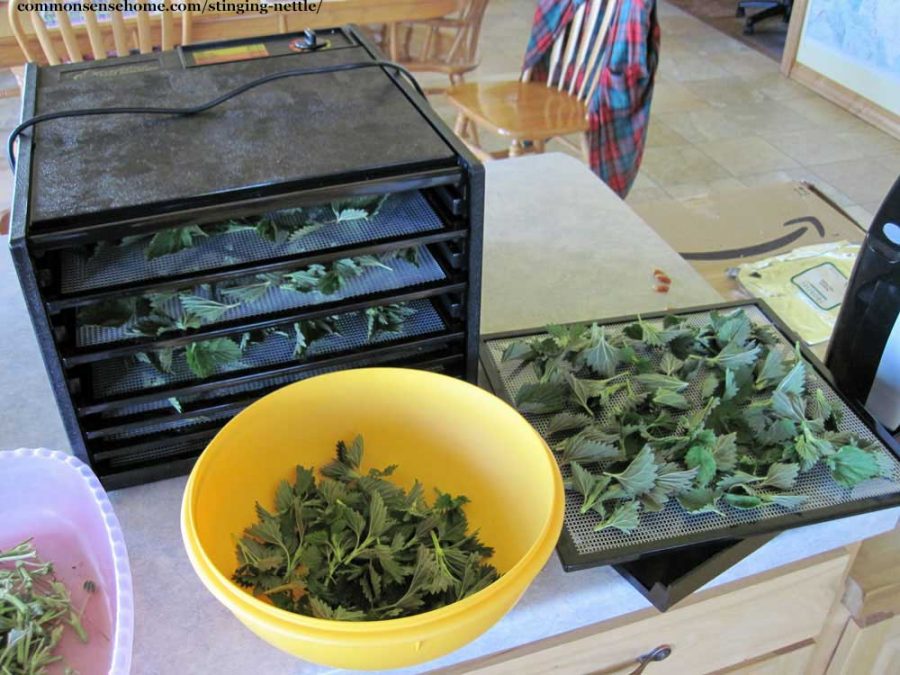
Like all edible wild plants, be careful to make sure to clearly identify the plant and test a little at first before consuming in quantity
Note: Healing Wise has a very nice assortment of nettle recipes for food and for hair and skin tonics.The Forager's Harvest is another good resource for harvesting and cooking tips.
Stinging nettles play host to a wide variety of insects and provide food for many other critters. They are the only food source for the larval form of the red admiral butterfly.
When I was a little girl, my mom would always add some chopped leaves and sour milk to cow feed to feed to the baby ducks and geese.
Nettles as a Herbal Rennet Substitute for Making Cheese
You can use nettles and some other herbs as a rennet substitute in cheesemaking. (The bookStillroom Cookery mentions cleavers and Jerusalem artichoke as other options as well.) Susun Weed gives a recipe for herbal rennet in Healing Wise:
- 1 quart nettles and 1 quart water
- 1 teaspoon salt
Cook leaves in simmering salted water in well-covered pan for ten minutes. Strain and add to warm milk. (Each cup of this will curdle 4 quarts (1 gallon) of milk.)
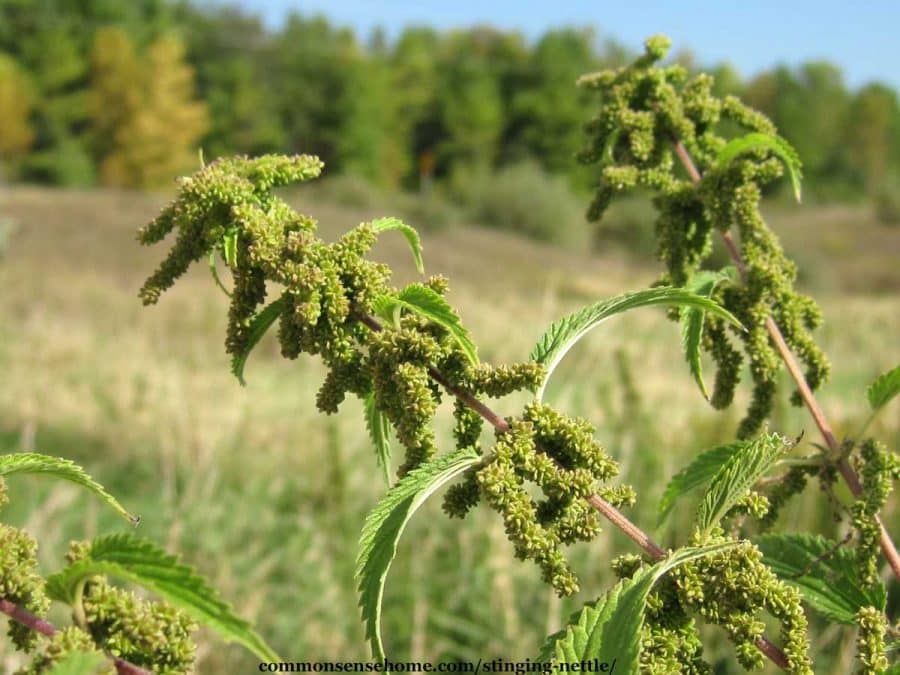
Stinging Nettle Benefits
In Healing Wise, Susun Weed sings the praises of nettle for just about everything, lauding it as a hair and skin tonic, adrenal booster, bone builder, gout healer and more. It acts as an anti inflammatory, and is loaded with nutrients.
Treat Seasonal Allergies
Using capsules or tea leading up to and through allergy season may help to reduce seasonal allergy symptoms, including allergic rhinitis.
Arthritis and Joint Pain
Historically, nettle arthritis treatment includes oral use and urtication. Urtication means flailing the affected joints with the plant. Read more in the post, “Home Remedies for Arthritis“.
Helps Regulate Blood Sugar
Nettle leaves were used traditionally to help treat diabetes mellitus, and modern studies indicate that they may help type 2 diabetic patients improve glycemic control.
Prevent and Break Down Kidney Stones
Nettle has a long history of use for urinary tract health. Initial studies indicate that the bioactive phytochemicals in the plant may inhibit calcium and oxalate deposition and crystal growth.
Relieve Symptoms of Enlarged Prostate
Studies have shown that stinging nettle extract may help relieve symptoms of Benign Prostatic Hyperplasia (BPH), a common health problem for men over 60. It may be used alone or in combination with saw palmetto.
Rat studies have also shown an increase in testosterone with the use of Urtica dioica, but this has not been replicated in human trials.
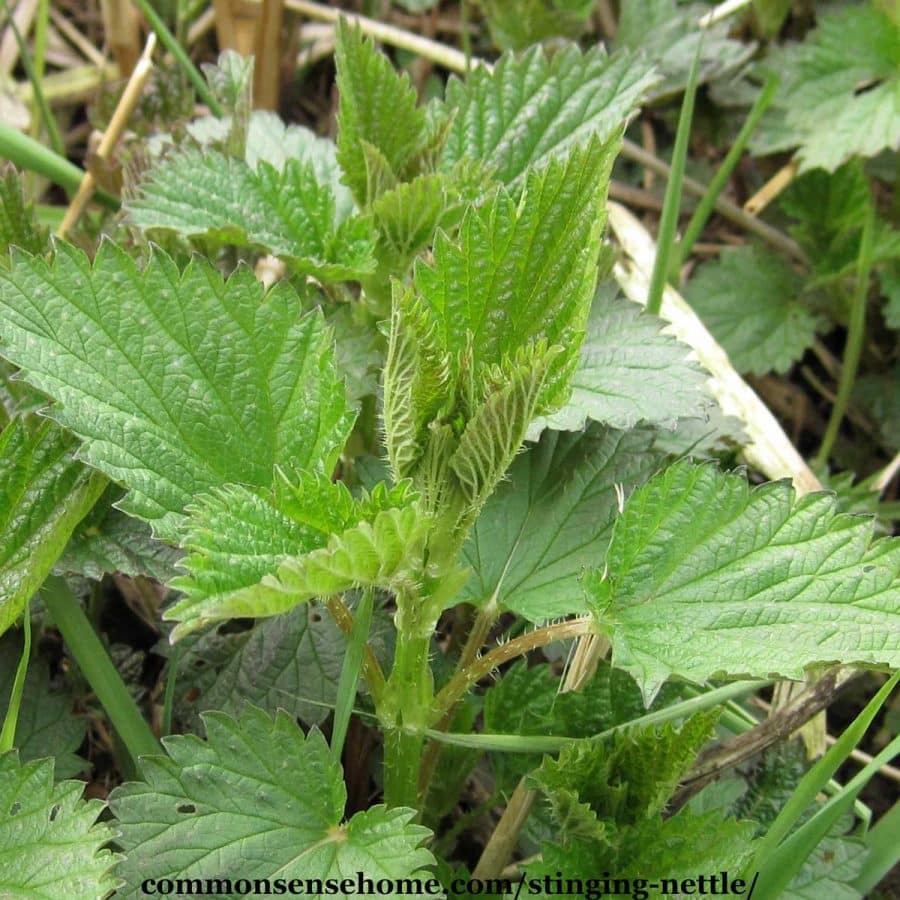
Other potential health benefits include:
- Stopping bleeding
- Antiseptic
- Poultice with drawing action for external ulcers
- Fresh juice used as toothache cure
- Infused ointment for insect bites and stings, rashes, burns, hives and fungal infections. (The “sting” contains histamines, the juice contains antihistamines.)
- Seeds act as a thyroid tonic and poison antidote
- Endocrine gland tonic
- Respiratory strengthener
- Improve digestive health
- Boost energy
- Act as a gentle laxative
- Improve lactation
Nettle Tea
Cover a tablespoon of dried leaf or crushed fresh leaves with a cup of boiling water. Let steep for 15 to 20 minutes, strain and drink. Sweeten with a bit of honey or maple syrup, if desired.
The tea can also be used as a hair rinse or massaged into the scalp to promote hair growth. For acne or other skin conditions, dab cooled tea onto the affected area.
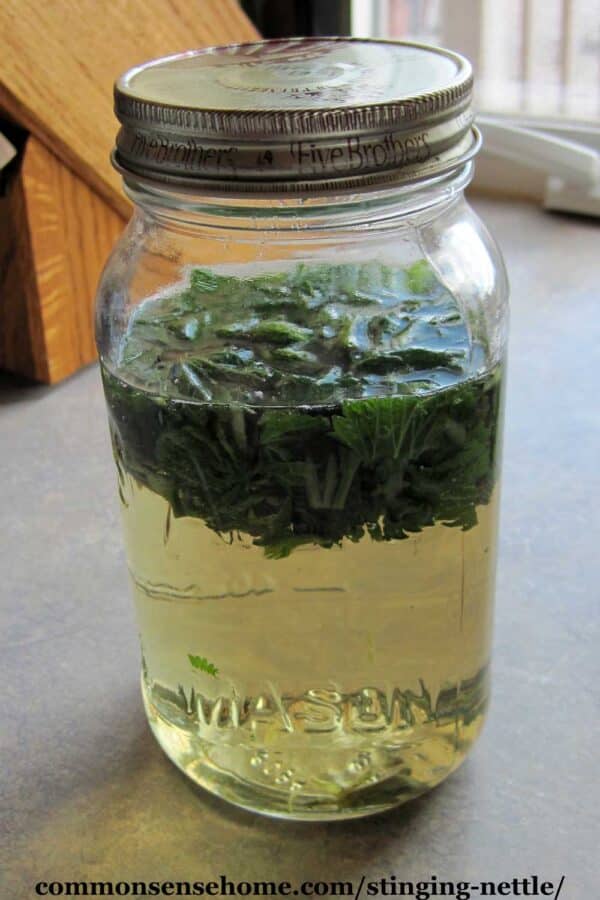
Nettle Infusion (Like an Extra Strong Tea)
To make an infusion, simply pour one cup boiling water over one ounce dried chopped leaves (by weight), cover and steep 4 hours or overnight. Strain out plant material and drink. Refrigerate any leftovers and consume within 48 hours.
The books Backyard Medicine and Healing Wise have a wonderfully detailed information on making and using nettle remedies.
Side Effects of Nettles
Always consult your health care provider if you are on any medications, nursing or pregnant.
Nettle may enhance the effect diuretic medications, and also increase excretion of lithium and other anti-depressant medications.
In the video below I show off our patch in spring.
Use Nettle in the Garden
Loaded with nutrients, nettle tea makes a great plant food. You can also add the leaves to yourcompost pile for some extra “oomph”.
Learn to Use Your Weeds
This post is part of the Weekly Weeder series, which is devoted to helping you use and manage wild plants.
Other posts in the series include:
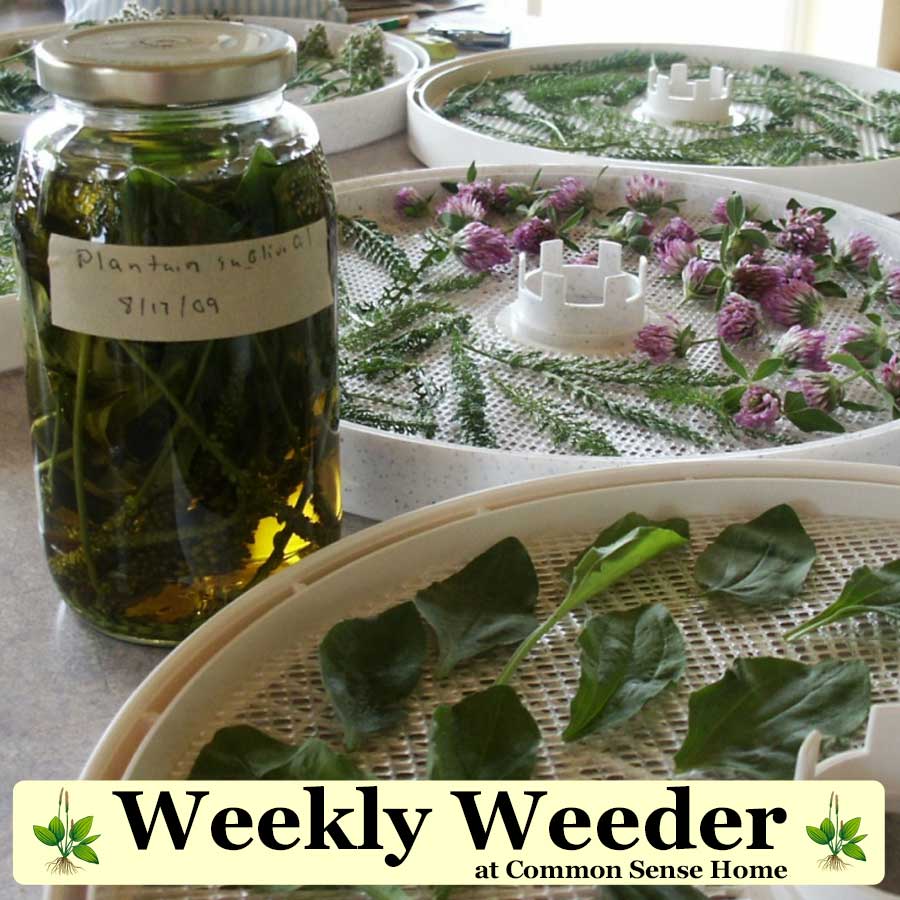
References
Originally posted in 2012, updated in 2019.

No comments:
Post a Comment